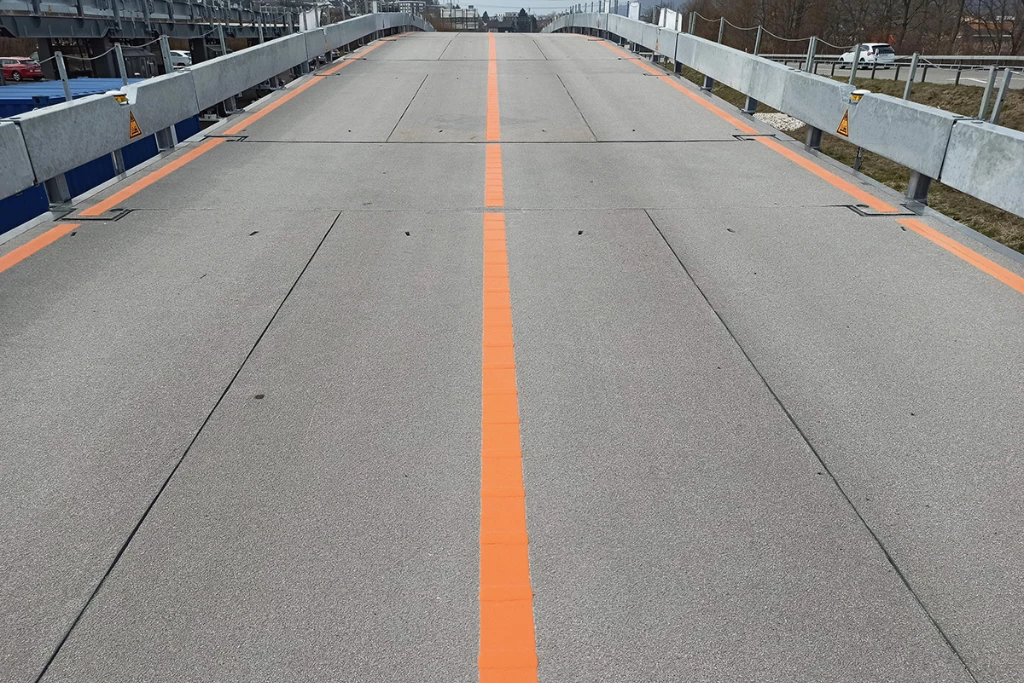A new modular mobile flyover bridge allows vehicles to drive right overtop of stretches of highway roadwork, instead of waiting to go around them. Known as the ASTRA Bridge, it's intended to make life easier for motorists and safer for roadway workers.
The structure was created by the Swiss government's Federal Roads Office.
An initial version was tested on a stretch of Switzerland's A1 motorway back in 2022, followed by a trial of a new-and-improved model which is currently in progress. That second version was installed on the A1 this April, and should remain in place until August.
Here's how the setup works …
Shortly before roadwork is scheduled to begin, the affected side of the highway is closed for one weekend. The various sections of the ASTRA are then brought in on trucks at night, and assembled to form a flyover that runs the length of the work area. Ramps at either end of the flyover allow vehicles to smoothly drive on and off of it.

The following week, the ASTRA is opened for use by motorists. Although those drivers do have to slow down to 60 km/h (37 mph) when traversing the flyover, they don't have to all merge into one lane, or stop and wait to be waved through the oncoming lane.
The highway workers, meanwhile, set about ripping up and replacing the road surface in the space below the flyover. Not only do they not have to worry about being hit by passing cars, they're also protected from the sun and rain. Additionally, since their roadwork isn't impeding busy daytime traffic (much), they can be scheduled to work during the day instead of having to pull night shifts.

Because there isn't enough headroom beneath the flyover for tall construction vehicles such as cement mixers, they use a ground-level "logistics lane" that runs alongside the structure. Depending on the scenario, that lane could be the road's existing passing lane or its hard shoulder.
Once work is complete on the initial stretch of highway, the entire flyover gets hydraulically raised by 10 cm (3.9 in) then moved down the road on motorized wheels to cover the next stretch of road – it's operated by remote control. This process can be repeated over and over, until the whole project is finished.

In its current form, the ASTRA Bridge measures 257 m long by 7.57 m wide by 4.65 m high (843.2 by 24.8 by 15.3 ft). The workspace beneath it is 100 m long by 5.1 m wide by 3.1 m high (328 by 16.7 by 10.2 ft).
The setup/teardown process requires 16 trucks with low-bed trailers making a combined total of 45 trips to transport all of the structural elements to/from the worksite Three cranes are also required, along with two 14-person assembly teams.
You can see the current prototype being set up and used by traffic, in the video below.
Source: Federal Roads Office








